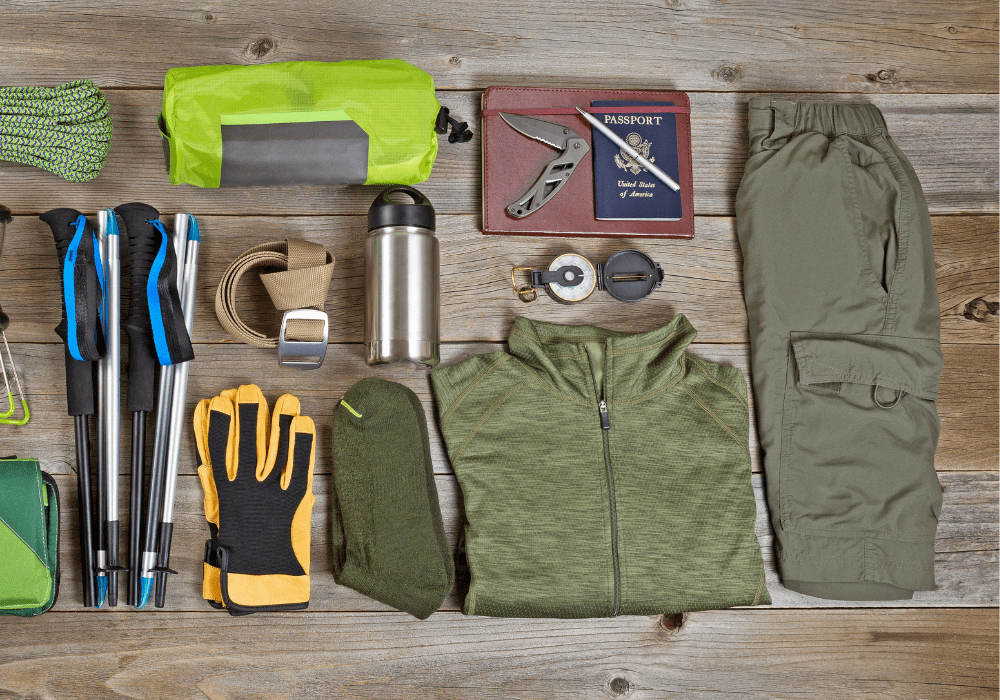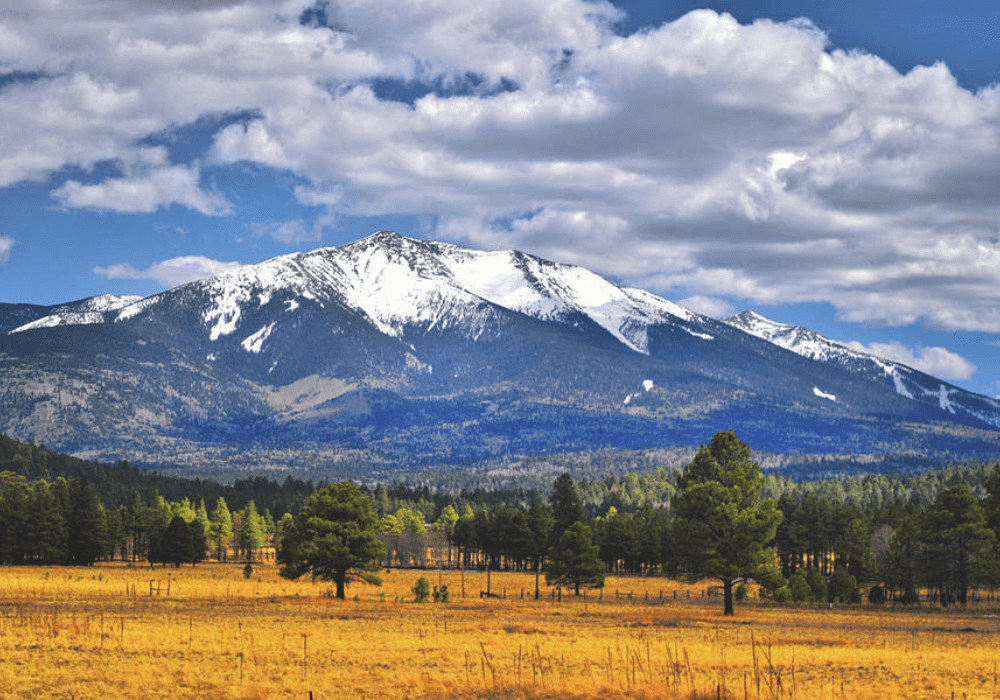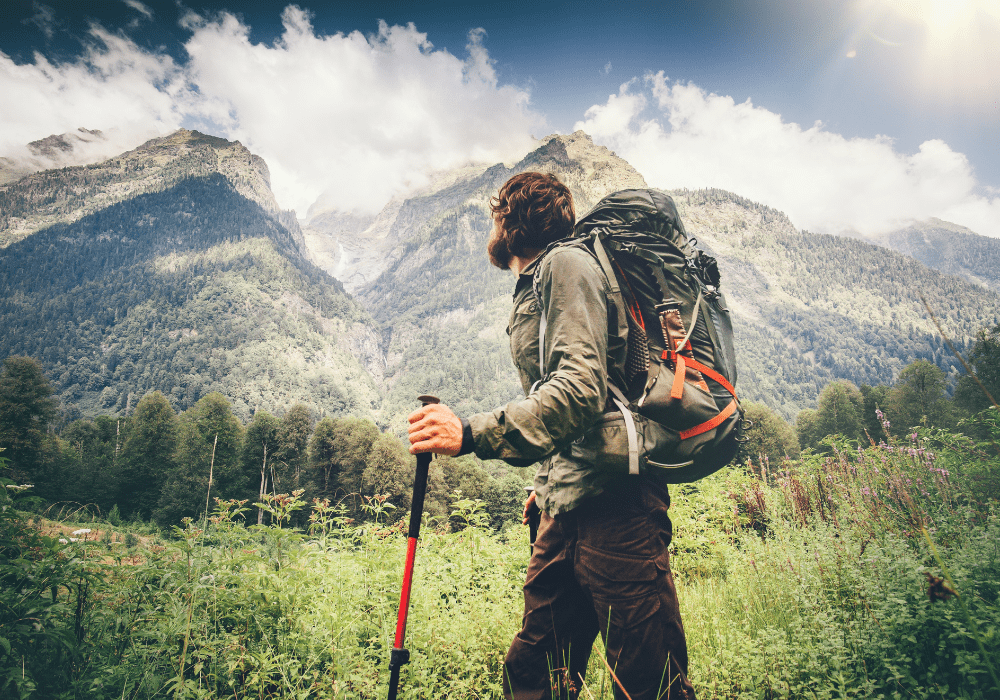
Winter Day Hiking Gear Checklist
If you’re a hiker looking to challenge yourself, winter hiking is the key.
Winter hiking poses brand new challenges brought about by the cold. From freezing winds to blinding snow, and even the occasional avalanche, winter hiking offers unique fun and challenges that you just can’t get during warmer months.
Table of Contents
Keep Warm and Keep Walking with These Winter Day Hiking Gear
Due to winter hiking’s unique set of challenges, you must adapt your hiking gear accordingly. Below you’ll find our suggestions for the gear you’ll need on a winter day hike. At the bottom, we included an easy-to-print quick checklist of all the items you see below.
1. Winter-Specific Backpack
The first piece of gear you’ll need is a winter-specific backpack.
Apart from the usual light weight, durability, and capacity you look for in regular hiking backpacks, a winter pack offers additional features like snow-shedding fabric, extra straps for snowshoes/skis, a helmet net, separate compartments for avalanche gear, an ice ax attachments. You can even get one with a strap that lets you attach an emergency whistle.
2. Layers of Clothes
Unless you live somewhere warm all year, you’ll probably already know that the key to defending against the cold is to wear multiple layers of clothes.
Depending on how cold your hiking destination is, you may need to wear at least three or four layers of clothing. Remember that layering isn’t just for your torso but your legs and hands as well.
3. Boots
One thing you’ll notice when hiking on snow is that it doesn’t have as much impact on your joints compared to hiking on harder ground. The problem is that snow and water can seep through your regular hiking shoes and, in the winter, that can lead to frostbite.
This is why you need winter hiking boots.
Your winter hiking boots should be durable, well-insulated, waterproof, have good traction, and be versatile enough for crampons or snowshoes.
4. Gaiters
Despite your boots being waterproof, snow and water can still enter between your boots and pants. You can seal this part by wearing gaiters. Gaiters don’t only keep snow and water out of your feet but also dirt, grit, and other trail debris as well.
5. Hat
A lot of our body heat escapes from our heads. To prevent this heat from escaping, you’ll need to wear a hat.
Your hat should be sweat-wicking, quick-drying, breathable, and (most importantly) insulating.
6. Balaclava or Neck Gaiter
Freezing winds, rain, and snow can make your face and neck feel chilly and numb. Avoid this by wearing a balaclava or a neck gaiter.
7. Sunglasses and Sunscreen
Snow is highly reflective and reflects 90% of sunlight. This is why you often squint when looking out over a field of snow. Protect your eyes and wear polarized sunglasses.
Also, all that reflected sunlight is going straight into your skin. You may be surprised that snow can act like a tanning mirror. Avoid sunburn by applying at least an SPF 30 sunscreen on your skin.
8. Snacks
Hiking, no matter what season, is enjoyable yet tiring. Never forget to bring your high-energy hiking snacks with you.
9. Water Bottle
Of course, you’ll need to keep yourself hydrated while out on the trail.
The problem is that plastic water bottles tend to freeze in the cold leaving you thirsty while waiting for your water to melt. You can avoid this by using an insulated water bottle or a vacuum thermos.
10. Map and Compass
Most smartphones these days have map and compass apps you can use on the trail. If your trail doesn’t have internet access, you may need to either download offline versions of your map or buy/print a physical copy.
Remember to bring a power bank for your phone if you’re using it for your map.
11. Winter Sleeping Bag and Pad
Sometimes nature gives us a curveball of a weather change and we just have to wait it out. Sometimes we just need to take a break, and maybe even a power nap, to re-energize ourselves.
When you experience times like these, you’ll thank yourself for bringing a warm insulated sleeping bag and pad you can relax in.
12. Firestarter
If you need to warm up even more during your break, you’ll need some way to start a fire. A lighter or waterproof match will do but so will a flint and steel. You may need to carry your tinder in case you can’t find dry sticks or twigs on the trail.
13. Trekking Pole
A trekking pole gives you extra traction and supports out on the trail. It also warns you of hidden dangers like thin ice or deep holes covered by soft snow. You can even use them as weapons if you’re hiking in bear or mountain lion country.
14. Tools
No matter how well you planned, you can never predict every possible problem you can encounter on the trail. To avoid any trip-ending troubles, you need to bring a versatile set of tools.
A survival knife can help you cut, whittle, and slice objects. It can also be used as a weapon by itself or lashed onto a stick to make a makeshift spear.
Having an E-tool is great for when you need to dig latrines or fire pits, or when you need to dig yourself (or someone else) out after an avalanche. It can also be used as a weapon.
If your knife and E-tool are there for the bigger jobs, a multi-tool can handle smaller, more specific, problems.
15. Toilet Paper
One of the most difficult problems when winter hiking is where to find toilet paper out on the trail. Unlike the warmer months where leaves were abundant, you’re stuck with snow and tree bark during the winter.
Avoid this problem and carry a folder roll of toilet paper (minus the cardboard core) in a resealable plastic bag.
16. First Aid Kit with Space Blanket
As we previously mentioned, you can’t know in advance what troubles you’ll face on the trail. This is why a fully-stocked first aid kit is a must. Make sure you add a space blanket or two to this kit.
17. Ski Strap and Paracord
A ski strap lets you quickly lash and hold things together like sticks, skis, etc. If you need more lashing, some paracord will get the job done.
18. GPS Tracker and Radio
While your smartphone may have a tracker already, it’s always better to err on the side of caution and carry a dedicated GPS tracker on your person at all times.
As an added layer of security, you can also carry a handheld radio to communicate with other hikers and the local rangers in case of emergencies.
Winter Day Hiking Quick Checklist
- Winter-Specific Backpack
- Layers of Clothes
- Boots
- Gaiters
- Hat
- Balaclava
- Sunglasses and Sunscreen
- Snacks
- Water Bottle (Vacuum Thermos)
- Map and Compass
- Winter Sleeping Bag and Pad
- Firestarter
- Trekking Pole
- Tools
- Toilet Paper
- First Aid Kit with Space Blanket
- Ski Strap and Paracord
- GPS Tracker and Radio




